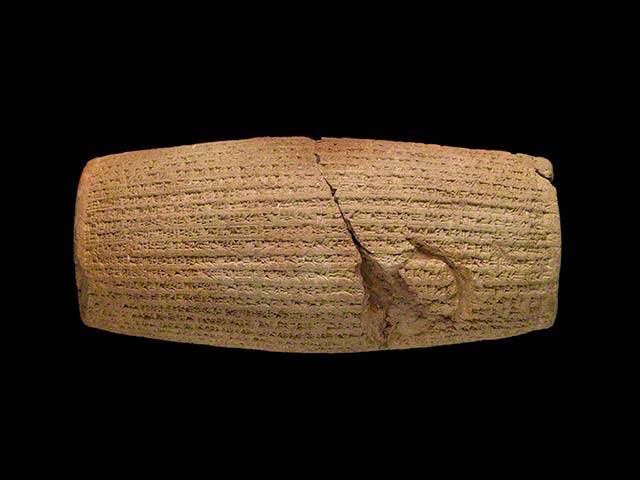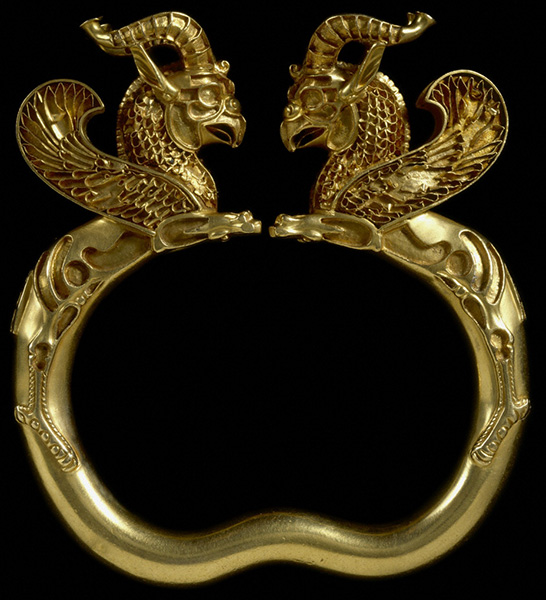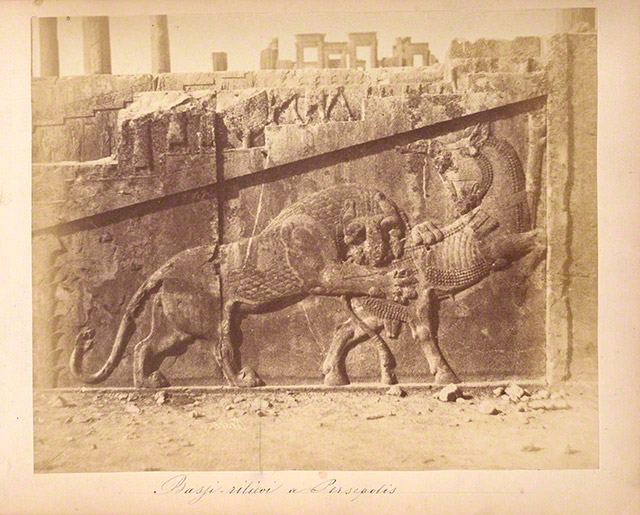The Cyrus Cylinder and Ancient Persia: A New Beginning

Inscribed with cuneiform script, the Cylinder records the conquest of Babylon in 539 B.C. by the Persian king Cyrus the Great (ruled 559–530 B.C.). Even before its discovery, Cyrus had been renowned as a benevolent and noble ruler. The Greek historian Xenophon (about 430–354 B.C.) presented him as an ideal leader in his Cyropaedia, while Old Testament texts praise Cyrus for bringing an end to the Jewish exile in Babylon. The Cylinder provides a valuable complement to this legacy, for it records — in Cyrus's own words — how, on taking control of Babylon, he restored religious traditions, and permitted those who had been deported to return to their settlements in and around Babylonia.
In taking Babylon, Cyrus brought what was recently the heart of a great kingdom into the growing Achaemenid Empire. Rather than imposing Persian practices on its peoples, however, he sought to uphold their traditions. This is evident from the Cyrus Cylinder itself. For one, the inscription was written in the local language, Babylonian. Moreover, by embedding this Cylinder in the foundations of Babylon, Cyrus was adhering to a standard practice in the region–intended to secure divine favor and record a ruler's achievements for posterity. In following an established custom, Cyrus set out to legitimize his newly acquired authority.
Watch an expert demonstrate how to write cuneiform script in this two-minute excerpt from a video on the Cyrus Cylinder.
Cyrus's policies and achievements formed the basis of the multiethnic Achaemenid Empire, which introduced new forms of writing, religion, and luxury goods to the Near East. In addition to the Cylinder, the exhibition features a number of related objects that highlight the Empire's artistic, cultural, and historical achievements of the Achaemenid Empire of Iran. These include architectural fragments, finely carved seals, and gold jewelry, vessels, and luxury objects from the Oxus Treasure.

As a unique accompaniment to the Getty's installation, a recent acquisition by the Getty Research Institute will be presented for the first time. Luigi Pesce's Album fotografico della Persia (1860) contains the earliest photographs of the Achaemenid palaces and audience halls at Persepolis, together with views of contemporary Tehran. The album is of particular relevance to the display of the Cyrus Cylinder, for Pesce dedicated it to Sir Henry Creswicke Rawlinson, who would publish the text of the Cylinder in 1880.


The Los Angeles presentation was made possible by the generous support of Farhang Foundation.

The J. Paul Getty Museum gratefully acknowledges its additional sponsors.
Major support was provided by:
Aria Mehrabi, PhD; Ali and Anousheh Razi; Hormoz and Fariba Ameri; the Jamsheed and Goli Ameri Family Foundation; the Bijan and Soraya Amin Foundation; Channel Development Inc.; Commercial Petroleum Equipment; Darioush Winery Napa Valley; David and Orna Delrahim; First Credit Bank; Fasha and Fariba Mahjoor; Farhad and Nushin Mohit; Younes and Soraya Nazarian; Pacific Convenience & Fuels; Phillips 66; Babak Razi; Michael and Katy Saei; Mehran and Laila Taslimi; Shidan and Susanne Taslimi; the Tavangarian family; and U.S. Trust, Bank of America Private Wealth Management
Generous support was provided by:
Wisfe and Jamileh Aish; Fred (Manuchehr) and Firouzeh Ameri; American Logistics International; Ali and Mojgan Amin; Mahmood and Shirin Amin; Reza Amin; Sam and Rene Anabi; Dariush and Haleh Gabbay; the Isaac and Angela Larian Foundation; David and Angella Nazarian; Sam Nazarian; Shulamit Nazarian and Bruce Adlhoch; Leon and Firoozeh Neman; Alan and Anoosheh Oskouian; Hooshang and Maryam Pak; United Oil Company; US Bank, N.A.; and Parviz and Vida Vazin

